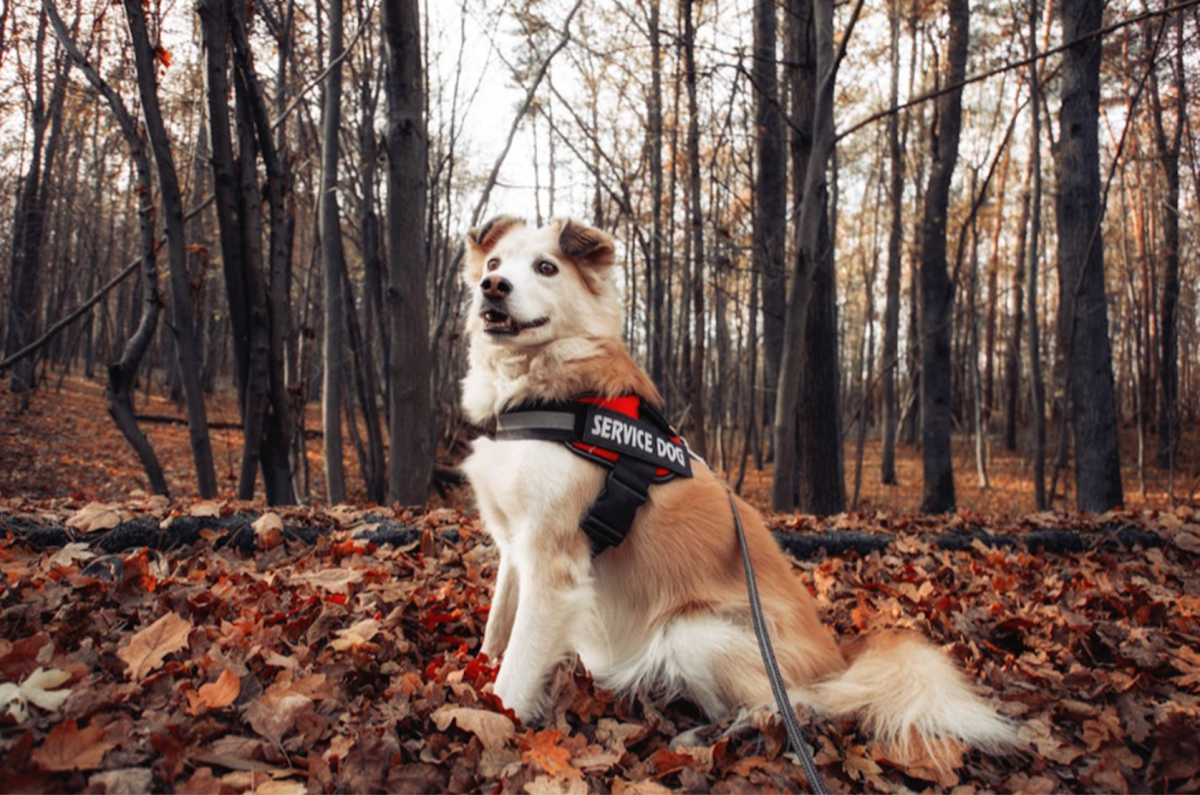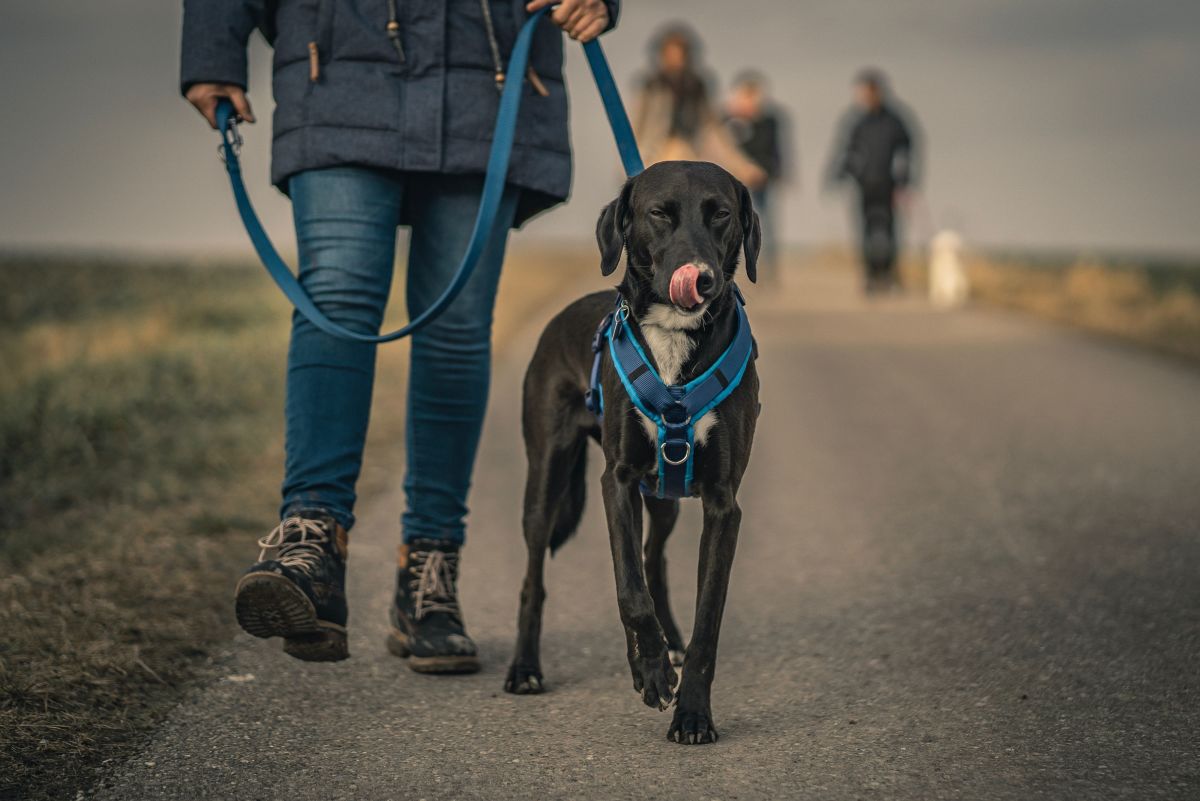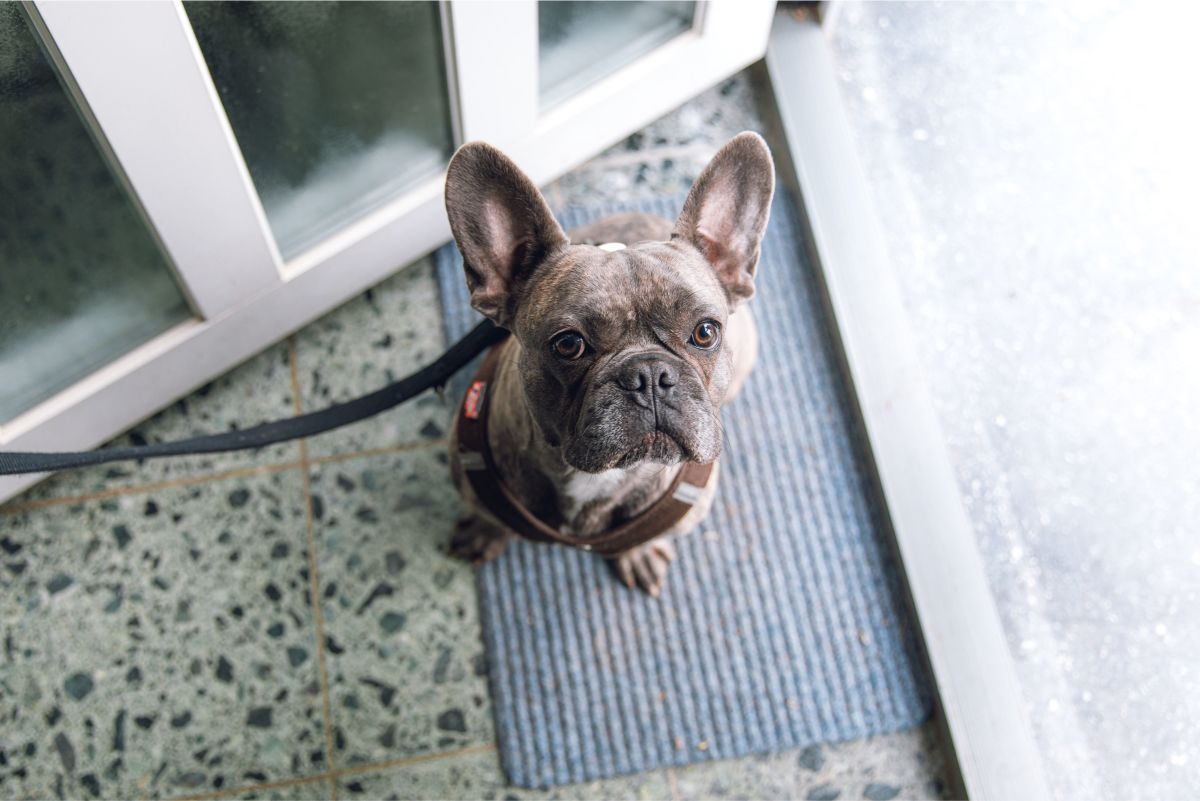The Stop-Pull Dog Harness

When we got our first dog, from the local animal rescue shelter, a large black European Labrador, we were informed that our dog had never been used to walking on a leash and, therefore, that he could never be allowed off the leash, due to his supposed predilection for running off. Thankfully, part of this advice proved to be complete nonsense, primarily about never being able to let him off the leash. We suspect that the poor beast had never been exercised properly by its previous owners and once he got a little older and a lot bigger, they dumped him. I can not speak for definite about the level of exercise dogs, at that particular shelter, received.
The staff at the shelter told us that they did know who the previous owners were, but they obviously did not want the dog, as they had abandoned it, several times. Unfortunately, there is no shortage of such owners who fawn over a dog when it is a small, cute puppy but when it grows up into a large dog, they lose all interest.
Nonetheless, he did tend to pull on his leash when we took him for walkies once we'd got him home, so much so that my partner was not able to walk him on the leash by herself. I myself was getting a bit tired of having my arms almost ripped out of their sockets, especially on the outward journey of walks and I am a 16 stone weight-lifter, who would be pretty strong.
The half-choke collar


Half-Choke Collars
Initially, we thought a choke-collar would be the solution and went to our local pet store to buy one, as I'm used to training dogs with a choke-type collar. Unfortunately, our local pet store, for reasons best known to themselves, has a policy of not selling full choke-chains, or choke-collars, and only stocked what are known as Half-Choke Collars. Although Choke-Collar sounds severe, they are not in the least bit cruel and are a good piece of training equipment for young dogs especially.
We purchased a Half-Choke Collar to try it out, but as suspected, it was not much good for our purposes. Now, these Half-Choke Collars work very well work for small dogs, but we have a large Labrador Retriever, who is strong, and the Half-Choke collar did not improve his strong pulling on the leash. For smaller dogs, I have seen half-choke collars working well and acting as an efficient training aid.

The Stop-Pull Harness
Eventually, we turned to the Internet for a solution, to our dog's excessive pulling on the leash and saw a Stop-Pull Harness, advertised by a well-known chain of pet stores. Most large pet chain stores also have websites for online sales and are worth checking out. The harness we got was about £14 ($20) and had a money-back guarantee, which thankfully we haven't had to avail of.
To our delight and surprise, the anti-pull dog harness has been the best pet orientated purchase I have made to date and quickly solved our dog's leash pulling tendencies. The construction of the harness means, that when the dog pulls, it is automatically brought upwards painlessly and dogs being the super-intelligent animals they are, soon figure out that leash pulling is an unproductive method of advancing forward during walkies.
The harness itself is fairly easy to fit and has faux fur on the part of the rig that goes under the dog's legs, to guard against chaffing. There is a 'D ring' at the back of the harness straps to attach your leash, but if you were really stuck you could use the straps as a makeshift leash as they are quite long. The Stop-Pull Harness we purchased, was sturdily produced and even though, in my later dog training days, I used a different methodology and harness, I can definitely vouch for the Stop-Pull at even prosumer level.
For dog owners concerned about safety issues, regarding the Stop-Pull Harness, for instance, their dog slipping the attachments, they can rest assured this is virtually impossible! Owners invariably fit their dog's harness indoors, before heading out for walks, as a safety issue, especially in built-up areas.
This is the kind of harness that you will want to use to help prevent your dog, of any size, from constantly pulling. Just as a final reassurance, the main leash is attached to the front of the dog's chest harness. If your dog pulls, then in effect the leash gives a tug on the side of their chest, therefore guiding the dog toward you and preventing them from moving forward. It is worth stressing that this device is totally painless and are in no way overly restrictive.
I am sure other pet stores sell the same products or similar, but we just happened to buy ours from Pets At Home and the money-back guarantee seemed to us like a retailer who was prepared to put their money where their mouth was. The Stop-Pull Harness made dog walking the joy it should be for us back then and it certainly improved our dog's walking behavior. If you have a dog that is pulling excessively on its leash, then a harness is the way to go - it may very well be the most important, sensible and practical purchase you ever make for your dog. Finally, your dog will associate the fitting of the harness as part of the 'walkies' routine, the highpoint of any dog's day. If you have any questions regarding the harness or dog-training basics, feel free to ask me, I am happy to help.
This article is accurate and true to the best of the author’s knowledge. It is not meant to substitute for diagnosis, prognosis, treatment, prescription, or formal and individualized advice from a veterinary medical professional. Animals exhibiting signs and symptoms of distress should be seen by a veterinarian immediately.
© 2019 Liam A Ryan










